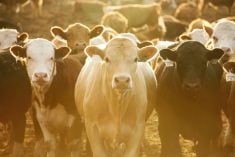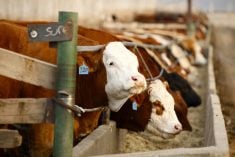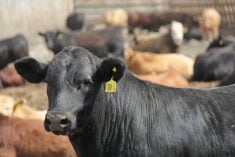Western Canadian feeder cattle prices were relatively unchanged from week-ago levels. Noticeable slippage was noted in shorter-keep cattle while lighter weight categories experienced spurts of $2-$3 above last week’s prices. Alberta packers were buying fed cattle at $292 on a dressed basis, up about $4-$6 from week-ago levels. However, auction rings experienced a subdued tone as feeder cattle futures came under pressure. Wholesale beef prices were on the defensive after surging throughout March and this felt like the first crack in the wall. Feedlot operators can be quite fickle; buyers received orders, then changed orders to lower prices, then had to cancel orders altogether and before we knew it, the market was slipping.
Read Also

U.S. grains: Soy futures post biggest monthly gain in nearly five years on China trade optimism
U.S. soybean futures climbed to a 15-month high and posted their biggest monthly gain in nearly five years on Friday following a rally fueled by the prospect of revived exports to China.
Angus-based larger-frame lower-flesh steers averaging just over 850 lbs. sold for $168 in southern Alberta; in central Alberta, larger-frame medium- to lower-flesh heifers averaging just under 850 lbs. traded for $160. There was not much of a discount on higher weight categories; black steers weighing 1,067 lbs. sold for $163 in southern Alberta. Direct off-farm sales of backgrounded cattle are in the final stages at this time of year. Cow-calf producers holding out for higher prices were spurred to move cattle as word of the softer price structure spread like wildfire across the Prairies. Cow-calf producers are clearing the table, taking the profits now, instead of holding lighter weights for grass.
A smaller group of mixed steers with Simmental base from 575 to 600 lbs. traded for $218 in central Alberta while their younger sisters averaging 540 lbs. were quoted at $184. Feedlot operators tended to shy away on the lighter categories, which allowed buyers of grassers to hold court this week.
Feedlot margins remain quite favourable, but the risk-averse sentiment returned this past week. The U.S. weekly slaughter is expected to increase over the next month and the weakness in wholesale prices may be a signal it will be harder to move beef product. Look for a steady tone next week, but further upside may be limited from current price levels.
— Jerry Klassen manages the Canadian office of Swiss-based grain trader GAP SA Grains and Produits Ltd. and is president and founder of Resilient Capital specializing in proprietary commodity futures trading and market analysis. Jerry consults with feedlots on risk management and writes a weekly cattle market commentary. He can be reached at 204-504-8339.












